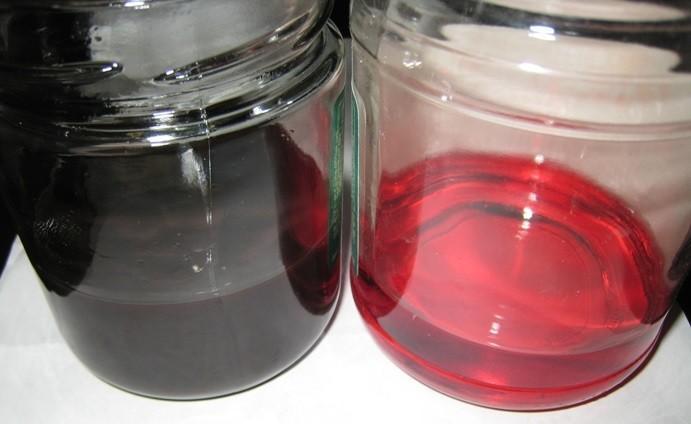Buying a classic with an automatic transmission involves a certain risk. Whether 'the machine' is good, that only becomes clear after a really long test drive. Automatic gearboxes have the reputation of being difficult and expensive when something is wrong. This means that any transmission doubt is a strong negotiating point in the purchase journey. Look almost casually at the condition and level of the ATF, the Automatic Transmission Fluid. Previous owners have often not done this for a long time, also because the dipstick for the oil level in the tank is not always easy to reach.
Beautiful red is not ugly
The ATF should be red or reddish. Due to internal pollution, wear, moisture and aging of oil, the ATF oil slowly becomes contaminated and loses its working properties. This makes the oil thicker and loses its lubricating properties. Contamination of the ATF oil will slowly contaminate oil channels, switch valves and blades of the automatic gearbox. As a result of which, for example, switching is no longer smooth.
Afraid of the high costs
There is an above average number of owners of classics with automatic transmission that are stuck with their hands because of the problems and the 'solutions' they are offered. These 'solutions' are usually very expensive and the number of people who can work sensibly on this type of transmission is not immediately impressive. There are usually more people with too little knowledge. But they often have the most horrible stories. In this way, quite a few people have become completely sick of their 'machines'. So sick that they actually wanted to get rid of it at any price.
In any case, that resulted in the adoption of a beautiful but poorly shifting Mercedes-Benz. The car was bought and stumbled to the first best gas station. The car was parked there and the ATF level was measured. The level was too low and the oil was dirty. Buy oil and so at a gas station? You do that for the main prize. But with two liters of fresh ATF in the container, the machine switched well again. After the box had been flushed at a professional, the automatic transmission shifted perfectly again and the Mercedes-Benz that was bought for five mille was worth ten mille unseen. The owner is still smiling every time he gets behind the wheel.
That was a textbook example of happiness. Because if the tank had really had technical problems, they would of course not have been solved by flushing.
The ATF really needs to be replaced around 100.000 kilometers. There was a while when manufacturers called the filling of the automatic transmission 'lifetime guaranteed'. It was a gross overestimation of one's own ability. They have come back to that enormously. The machine also deserves a fresh filter or fresh filters. If maintenance is not carried out on time, this can eventually lead to the automatic transmission malfunctioning, after which the automatic gearbox needs to be renewed, overhauled or otherwise repairs, often resulting in a high bill. And that bill can run into the thousands of euros.
Black ATF has been too hot. ATF that has been too hot also smells burned
Overheated ATF can have all kinds of expensive consequential damage. Too low an ATF level is also not good. Then we come to the drawing of the chance card: in 90% of the practical cases, a poorly shifting automatic transmission is all right again when it is flushed, flushed.
The symptoms that usually occur
This usually resolves the following complaints: shocks with forwarding, not being able to choose properly and retaining acceleration, kick-down is not functioning properly, fluctuating speeds, slipping of the automatic transmission and increased fuel consumption. There are companies that specialize in flushing automatic transmissions.
If this story has put you on the prowl to buy a classic with a poorly switching machine, then you do so at your own risk. But at least check the color (must be red), the odor and the level of the ATF when checking.
But once you have driven a classic with a properly functioning automatic transmission? Then you never want to switch again.
New Year's Eve does not have to fall on December 31






Recently a discussion with my father-in-law ……
Does not have an oldtimer, but a Focus 1.6 automatic transmission from 2004 with 190.000km
With the caravan behind, little pulling power, but normally
I don't think it's a sprinter either….
Catching up is a long-term history because it does not switch back
I indicated to renew the cooking oil
At the Ford garage they say lift time filling unless there is a leak
They have checked the level and state that by age
the car may have some difficulty with a caravan (net), it's only a small one….
Is there someone here who says the same as me, either change cooking oil, or better flush?
Doing lift time with your transmission oil was, I think, quite right as rarely more than a ton of km / mls was driven in the good old days.
The name ATF always appears in the story (also in the magazine). Meanwhile, there are already enough classics (certainly young timers) that Dexron II should have in store. Really check what goes in the bin, Dexron II (now we are already on IV even V) in an ATF bin certainly does not go well, sit and friction amplifier in which the ATF bin can not stand, also applies to the power steering , Dexron II in an ATF steering box guarantees guaranteed leaks over time. And 0m refresh the 100000 km? Would simply refresh the box drain every time (torque converter remains full) and refresh that part. Saves a lot of headache. And are you looking for the dipstick on the Jaguar XJ X308? Unfortunately, there is none. Can only be tested on a bridge with a special procedure. Tip for the general garage.
Thank you for this valuable addition!